Showing Spotlights 273 - 280 of 2779 in category All (newest first):
 Researchers have developed a sprayable on-site sensing tool. The main application area for this sensor spray is the detection of specific analytes in an environment where sample collection is a difficult task either due to the target chemicals themselves or the area where the samples are located. A nebulization method allows for nanofibers to be sprayed onto any surface, while the accompanying phone-based application allows for direct on-site detection.
Researchers have developed a sprayable on-site sensing tool. The main application area for this sensor spray is the detection of specific analytes in an environment where sample collection is a difficult task either due to the target chemicals themselves or the area where the samples are located. A nebulization method allows for nanofibers to be sprayed onto any surface, while the accompanying phone-based application allows for direct on-site detection.
Jun 27th, 2022
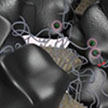 The goal of the electronics industry has always been to build durable devices with stable performance that last a very long time. Self-destructing, transient electronics however, are designed with the exact opposite goal: to dissolve harmlessly into their surroundings after functioning for a predetermined amount of time. Researchers now demonstrate novel biodegradable, recyclable, conductive, flexible, and printable materials that can be applied across many electronic devices to serve as a cornerstone for the development of ecofriendly and recyclable electronics.
The goal of the electronics industry has always been to build durable devices with stable performance that last a very long time. Self-destructing, transient electronics however, are designed with the exact opposite goal: to dissolve harmlessly into their surroundings after functioning for a predetermined amount of time. Researchers now demonstrate novel biodegradable, recyclable, conductive, flexible, and printable materials that can be applied across many electronic devices to serve as a cornerstone for the development of ecofriendly and recyclable electronics.
Jun 22nd, 2022
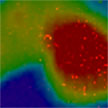 Every cell relies on the uptake (endocytosis) of materials like proteins, cytokines and even synthetic carbon nanomaterials, to perform its required cellular fate functions. Studying this process in detail is an extremely challenging and thus extremely interesting goal in biophysics. Therefore, endocytosis is of interest for bringing therapeutic targets into cells. Studying the pathways of how materials get into the cell can aid in untangling trafficking to design higher efficiency targeted drug and gene delivery therapies.
Every cell relies on the uptake (endocytosis) of materials like proteins, cytokines and even synthetic carbon nanomaterials, to perform its required cellular fate functions. Studying this process in detail is an extremely challenging and thus extremely interesting goal in biophysics. Therefore, endocytosis is of interest for bringing therapeutic targets into cells. Studying the pathways of how materials get into the cell can aid in untangling trafficking to design higher efficiency targeted drug and gene delivery therapies.
Jun 20th, 2022
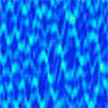 Ultra-narrow optical features with a spectral bandwidth below 1 megahertz are highly sought-after for applications in ultrahigh-precision sensing, narrow-band filtering, and information storage for optical computing - but unfortunately they are extremely challenging to generate. But now there is a novel way to achieve ultra-narrow optical features. And unlike conventional approaches, it is cost-effective, has a simple arrangement, and is loss-free, while offering on-demand tunability and ultrahigh sensitivity.
Ultra-narrow optical features with a spectral bandwidth below 1 megahertz are highly sought-after for applications in ultrahigh-precision sensing, narrow-band filtering, and information storage for optical computing - but unfortunately they are extremely challenging to generate. But now there is a novel way to achieve ultra-narrow optical features. And unlike conventional approaches, it is cost-effective, has a simple arrangement, and is loss-free, while offering on-demand tunability and ultrahigh sensitivity.
Jun 17th, 2022
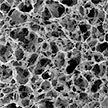 The development of efficient cooling technology based on environmentally friendly and biobased materials is crucial to many day-to-day activities. A novel, highly efficient cellulose nanocrystal aerogel radiative cooler acts as a dual-function thermal insulator and daytime passive radiant cooler. These aerogel coolers can save on average more than 35% in cooling energy consumption and they are capable of achieving a nearly 9 degree C drop under direct sunlight, they even work effectively in hot, moist, and fickle extreme surroundings.
The development of efficient cooling technology based on environmentally friendly and biobased materials is crucial to many day-to-day activities. A novel, highly efficient cellulose nanocrystal aerogel radiative cooler acts as a dual-function thermal insulator and daytime passive radiant cooler. These aerogel coolers can save on average more than 35% in cooling energy consumption and they are capable of achieving a nearly 9 degree C drop under direct sunlight, they even work effectively in hot, moist, and fickle extreme surroundings.
Jun 16th, 2022
 One of the key goals of nanochemistry is to develop artificial systems that imitate biological processes, particularly aiming at replicating the basic behavior of life forms. In this field, the interaction between droplets is gaining increasing attention as model systems to approach the dynamic behaviors of living cells, which have evolved to harvest energy from their environments to drive the chemical processes that enable life. The development of these 'droplet frameworks' is an essential tool to understand, explain and eventually replicate Nature's processes during the early steps in the origin of life on Earth. Researchers have now demonstrated that basic features found in many living cell types can emerge from a simple two-droplet framework.
One of the key goals of nanochemistry is to develop artificial systems that imitate biological processes, particularly aiming at replicating the basic behavior of life forms. In this field, the interaction between droplets is gaining increasing attention as model systems to approach the dynamic behaviors of living cells, which have evolved to harvest energy from their environments to drive the chemical processes that enable life. The development of these 'droplet frameworks' is an essential tool to understand, explain and eventually replicate Nature's processes during the early steps in the origin of life on Earth. Researchers have now demonstrated that basic features found in many living cell types can emerge from a simple two-droplet framework.
Jun 10th, 2022
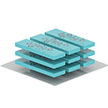 Organic semiconductors (OSCs) are a class of semiconductor materials consisting of conjugated molecules or polymers. Compared to inorganic semiconductors, OSCs have distinctive advantages including being solution-processable, suitable for low-cost and large-area fabrication of electronics, and applicable to flexible/stretchable electronics, among others. Given the importance of doping techniques for semiconductors, it is highly attractive to establish doping methodologies for OSCs similar to that for silicon. This would simplify the difficulty and cost of synthesizing different types of OSCs for various applications, as well as lead to interesting structures such as organic PN homojunctions.
Organic semiconductors (OSCs) are a class of semiconductor materials consisting of conjugated molecules or polymers. Compared to inorganic semiconductors, OSCs have distinctive advantages including being solution-processable, suitable for low-cost and large-area fabrication of electronics, and applicable to flexible/stretchable electronics, among others. Given the importance of doping techniques for semiconductors, it is highly attractive to establish doping methodologies for OSCs similar to that for silicon. This would simplify the difficulty and cost of synthesizing different types of OSCs for various applications, as well as lead to interesting structures such as organic PN homojunctions.
Jun 9th, 2022
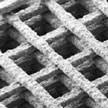 Although 4D printing is considered very promising for various biomedical applications - such as tissue scaffolds, neural scaffolds, grafts and stents, cardiac patches and valves, even bionic constructs - its broad-scale adoption for clinical use and tissue engineering purposes is complicated by a notable limitation of printable smart materials and the simplistic nature of achievable responses possible with current sources of stimulation. Nevertheless, 4D printing may offer a more favorable fabrication approach over 3D printing, as 4D constructs can respond to internal and/or external stimuli.
Although 4D printing is considered very promising for various biomedical applications - such as tissue scaffolds, neural scaffolds, grafts and stents, cardiac patches and valves, even bionic constructs - its broad-scale adoption for clinical use and tissue engineering purposes is complicated by a notable limitation of printable smart materials and the simplistic nature of achievable responses possible with current sources of stimulation. Nevertheless, 4D printing may offer a more favorable fabrication approach over 3D printing, as 4D constructs can respond to internal and/or external stimuli.
Jun 7th, 2022
 Researchers have developed a sprayable on-site sensing tool. The main application area for this sensor spray is the detection of specific analytes in an environment where sample collection is a difficult task either due to the target chemicals themselves or the area where the samples are located. A nebulization method allows for nanofibers to be sprayed onto any surface, while the accompanying phone-based application allows for direct on-site detection.
Researchers have developed a sprayable on-site sensing tool. The main application area for this sensor spray is the detection of specific analytes in an environment where sample collection is a difficult task either due to the target chemicals themselves or the area where the samples are located. A nebulization method allows for nanofibers to be sprayed onto any surface, while the accompanying phone-based application allows for direct on-site detection.
 Subscribe to our Nanotechnology Spotlight feed
Subscribe to our Nanotechnology Spotlight feed





